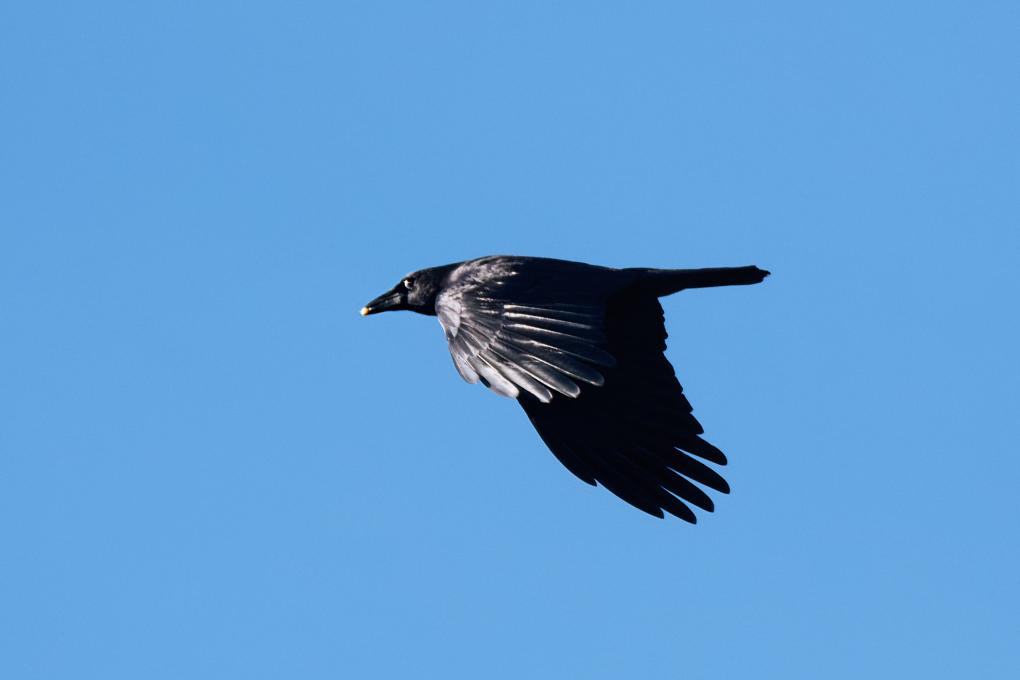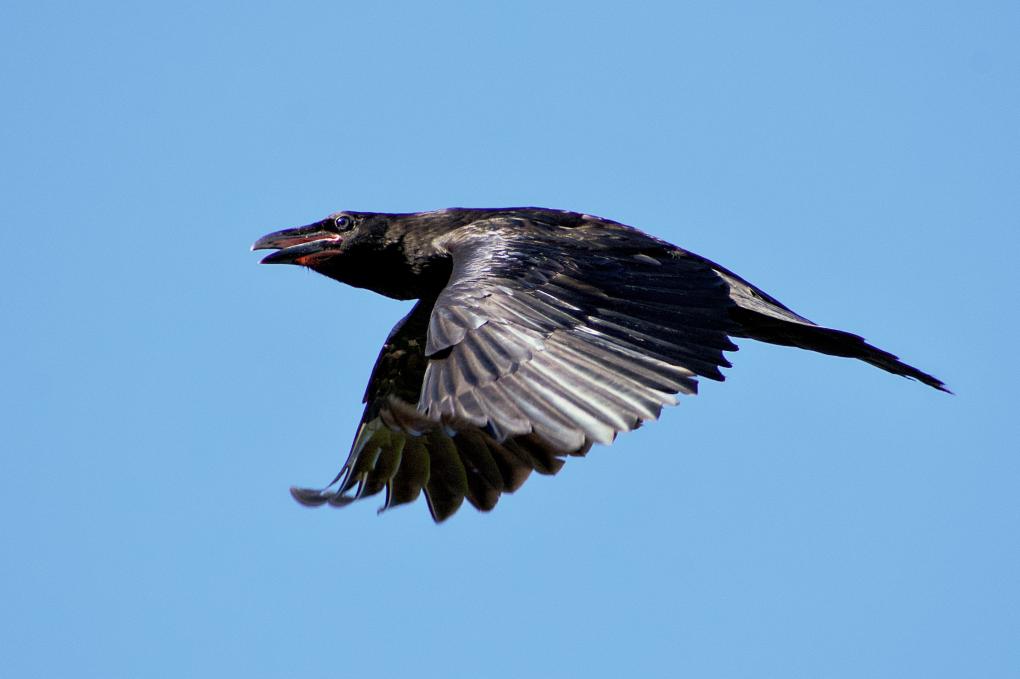John
Forum Replies Created
Viewing 14 posts - 1 through 14 (of 14 total)
-
JohnParticipantA pair of Pileated Woodpeckers have been observed in the woods of the Blue Ridge Mountains where I reside. They have been around for many years. The calling and drumming are a welcome sign of their presence. There are five other species of woodpeckers also observed in this area. I think that all of the drumming and calling of these various species is a positive sign of the health of the forest. One hundred years ago the trees were clear cut logged. The succession forest now is mature enough to supply woodpeckers with the right type of wood for drumming behavior.in reply to: The Life of Woodpeckers #1018679
-
JohnParticipantThe Zygodactyl woodpecker foot, as opposed to the Anisodactyl foot of most other species of birds, is an amazing adaptation for clinging to trees. Since woodpeckers do not perch so much as they cling, this arrangement of toes helps them move better up and down on the trunk of the tree. Other species of tree habitat birds tend to move side to side when perched on a tree limb so they have to grasp with a hallux opposed to three toes.in reply to: How Woodpeckers Rule the World of Wood #1018557
-
JohnParticipantChris, The toe placement on the Pale-billed Woodpecker is interesting. Was the bird stationary when you captured that image or was it working its way up the tree trunk?in reply to: What Makes a Woodpecker a Woodpecker #1018521
-
JohnParticipantWhen traveling in the southwest the Acorn Woodpecker is one of my favorite subjects for photography. I caught this one in the blink of an eye. (Boulevard, Calif.)
 in reply to: What Makes a Woodpecker a Woodpecker #1018450
in reply to: What Makes a Woodpecker a Woodpecker #1018450 -
JohnParticipantOne of the crows frequently seen in my community. This one flew from a tree with natural food.
 in reply to: Consequences of Urban Life #990532
in reply to: Consequences of Urban Life #990532 -
JohnParticipantIn the planned community where I live, in the Blue Ridge Mountains of North Carolina, we have many crows. We might be described as a managed environment for the bird community. The surrounding county is rural and there is no urban area close by so we have a managed/rural kind of environment. We have a permanent population of crows that I count on eBird almost daily. As this is a very well managed community of property owners, there isn't much opportunity for the crows to get into trash or find human food, yet they can be seen or heard all about the area. There is a lake and open areas such as the golf course and recreational areas. The crows can be seen in these areas daily. So, my guess is that the crows are getting natural food or else they are flying to areas where non-natural food can be found. There are plenty of nesting opportunities in the many tall pines in the general area. People in the community rarely comment on or complain about the crows. People in the rural surrounding area my have problems with crows raiding their crops and gardens. Thus the "scarecrow" use in the rural areas.in reply to: Consequences of Urban Life #990531
-
JohnParticipantUse of peanuts and tree climbing. The big tags also.in reply to: Crow Research Techniques #990043
-
JohnParticipantI encounter groups of crows that I assume are a family primarily in two areas of the housing development where I live in the Blue Ridge Mountains. I think there are two families in 750 acres. I think of them as the north and the south families. Occasionally they meet near the middle and have a squawking and cawing good time (I may be anthropomorphizing about that). Mostly I observe a smaller group of four or five near where I live flying through the trees or foraging on the ground. I can think of no other birds that I have observed that compare to the crows. The closest I can think of in this area would be the Canada geese. There is a breeding pair here every spring/summer. The main difference from crows is the breeding pair will not allow any other goose to come close to the juveniles to share in parenting. But then the juveniles are quickly up and about eating grass like the adults.in reply to: Home and Family Life #990042
-
JohnParticipantI have observed crows foraging in several locations around the area that I eBird. The golf course is one favorite place where they walk about finding food in the rough margins of the fairways. I have also noticed crows on the dam holding back the lake. They forage on the top in the grass and sometimes among the rocks of the rip-rap. They also seem to spend time in the fenced-in area to the water treatment plant behind the dam. What they are finding for food is a mystery to me. I also see large flocks of Canada geese on the lake at various times of the year. Ducks, dabbling as well as diving, migrate through two times a year and use the lake for a day or two possibly as a resting stop.in reply to: Life in a Flock #990038
-
JohnParticipantI would suppose that inbreeding could be a threat, although the percentage rates of incest and near related are rather high, how many generations has this been happening? If this has been the crow way for eons then maybe there is some sort of genetic advantage. Extra-pair fertilization possibly has some benefit for the health of a flock or family to offset any disadvantage that incest or near related that might occur.in reply to: Secret Sex Lives #990036
-
JohnParticipantThe crows I have observed in my area do appear to be healthy. I had no knowledge of foot disease before this course. If I were to see a crow missing a foot, before this course, I would have thought that it was the result of a collision with a car or some other mechanical event. I have no knowledge of West Nile Virus infection the local population here in western North Carolina. I have observed aggression between the crows of this area. In fact, I have observed much raucous calling and chasing through the trees, signs of territory protection or invasion. Occasionally I have observed pairs of crows very close on a perch possibly allopreening.in reply to: A Real Murder of Crows #990031
-
JohnParticipantJudging by the number of crows that can be seen or heard in the area where I live, one would think it is easier for crows to achieve breeding status. But, that may be a situation where it would be more difficult. If there is a large population present in an area, then the waiting list to find a mate would be long with competition of older birds waiting for breeding territory. Males have more opportunity to inherit than females as females rely on replacements as breeding strategy. So, in heavily populated areas females would find it more difficult to breed than males, thus they would leave to find new or replacement territory. Males may find it easier to mate as there are more options for them to stay in a native territory.in reply to: Routes to Breeding Status #990027
-
JohnParticipantWe occasionally have a roosting in the winter next to the golf course, lots of noise early in the morning. We do have crows all year, I think there is more than one family that lives around the area of the housing development of 750 acres. Besides the golf course there is a 45 acre lake. We also have many large pines and balsams, as well as acorn and nut bearing deciduous trees, for the crows and other birds to roost in for year round protection. So, the area has much to offer the crows, that is why I always have crows to count when using eBird. Before this course I thought that large groups of crows were because of predator location and the mob would chase off the predator. I have learned now that large roosts are a common part of crow behavior.
-
JohnParticipant3. I live in the Blue Ridge Mountains of North Carolina. Some of the tallest mountains in the Appalachian chain are here. We have ravens that inhabit the highest peaks, some more than 5,000 feet elevation. Both species can be seen or heard where I live at 3,600 feet elevation. The crows travel more in groups and the ravens are more solitary. I distinguish the difference between them more by calls or by overflight. The tail feathers are my best method for determining the overflight identification. Attached are a pair of images of ravens I have captured while birding.

 in reply to: What is a Crow? #989067
in reply to: What is a Crow? #989067
Viewing 14 posts - 1 through 14 (of 14 total)



